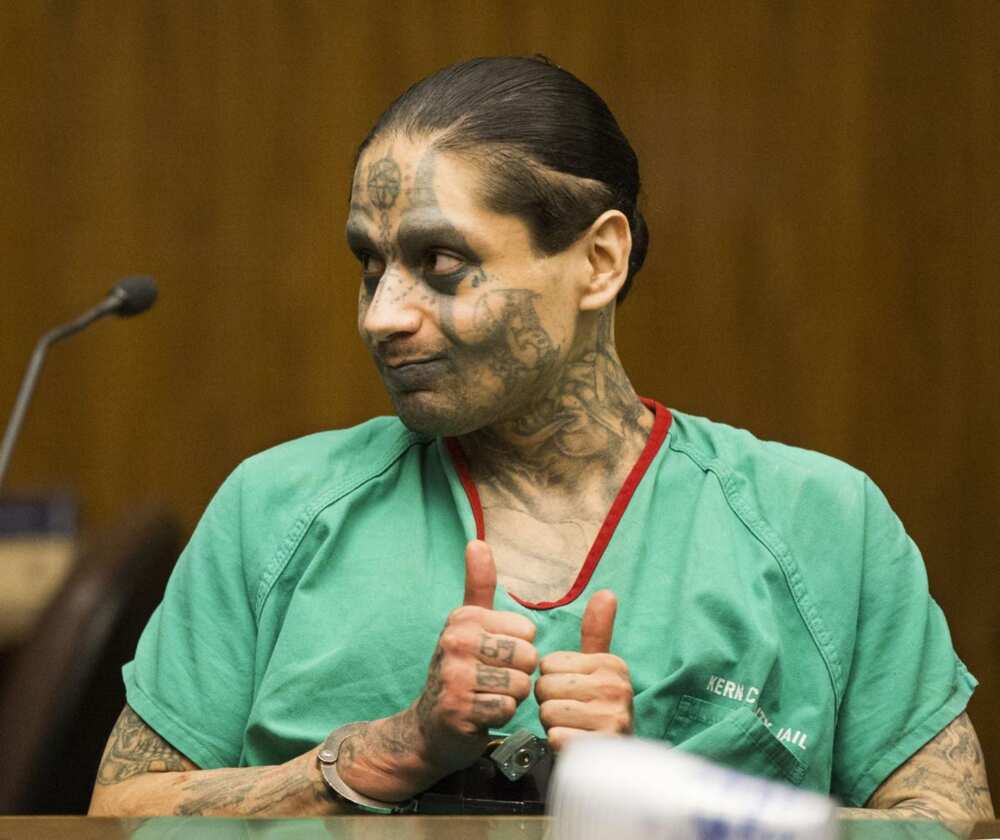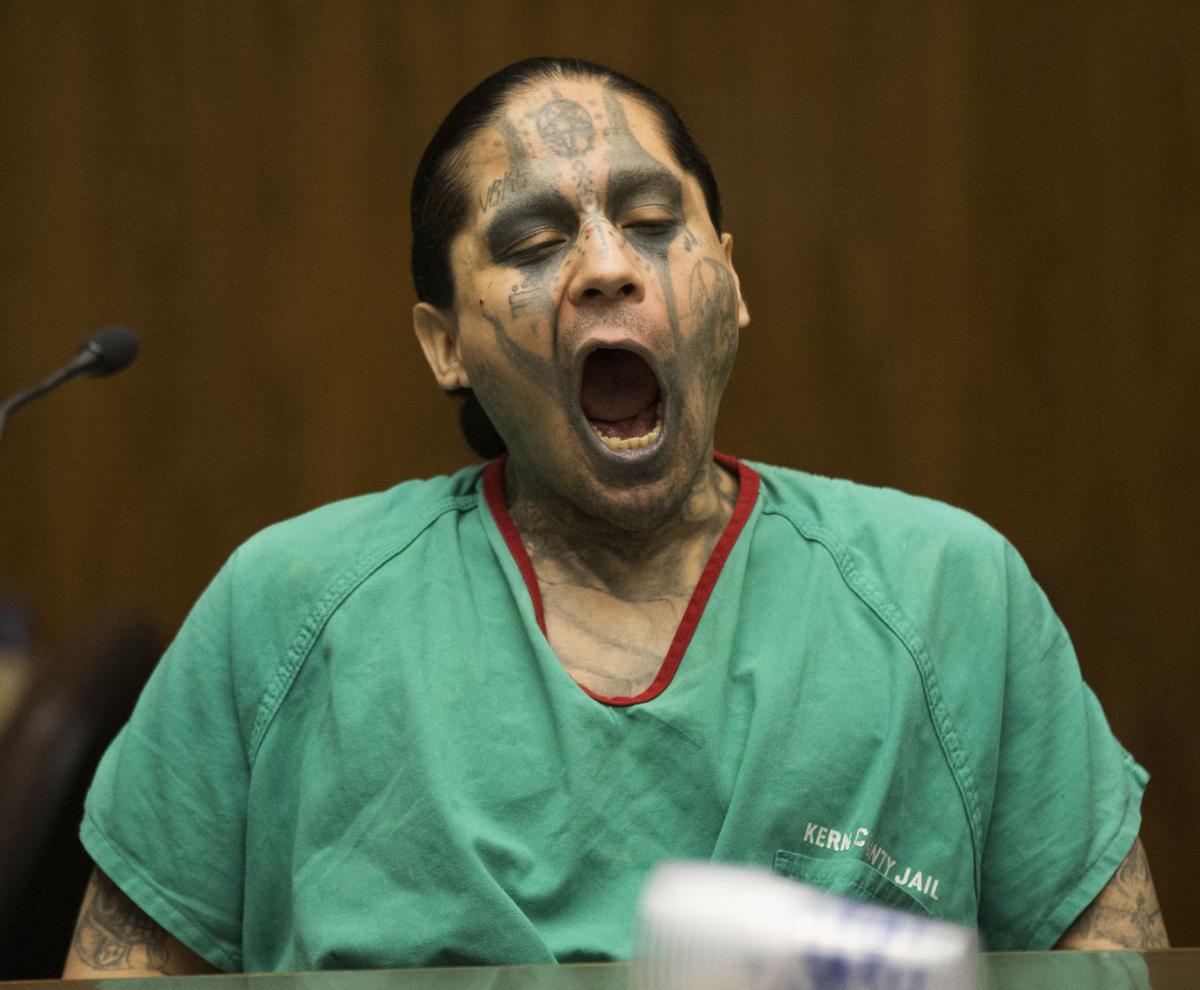The Horrifying Jaime Osuna Cellmate Killing: What We Know
Is there a limit to the depravity of the human heart? The gruesome case of Jaime Osuna suggests the answer may be a chilling no. Osuna, a 31-year-old avowed Satanist, stands accused of one of the most horrific prison slayings in recent California history, a crime that has not only shocked the conscience but also raised serious questions about the state's correctional system.
The details of the alleged crime are disturbing. In March 2019, Luis Romero, 44, was found dead in his shared cell at Corcoran State Prison, a facility known for its high levels of violence. According to state documents and reports, Osuna allegedly decapitated and dissected Romero's body using a makeshift knife. The sheer brutality of the act has led prosecutors to seek the death penalty, a punishment Osuna seemingly embraces, having reportedly confessed to the killing.
| Category | Information |
|---|---|
| Name | Jaime Osuna (also referred to as Jamie Osuna) |
| Age (at time of Romero's death) | 31 years old |
| Current Status | Imprisoned in the United States of America |
| Convictions | Murder of Yvette Pena (prior to Romero's death); Accused of the murder of Luis Romero |
| Location of Imprisonment (at time of Romero's death) | Corcoran State Prison, Kings County, California |
| Religious Affiliation | Avowed Satanist |
| Victim (Luis Romero Case) | Luis Romero, 44 years old |
| Date of Romero's Death | Night of March 8 to March 9, 2019 |
| Legal Proceedings | Facing the death penalty for the murder of Luis Romero; resentencing hearing in Bakersfield related to the Yvette Pena case. |
| Background | Grew up in poverty and witnessed domestic violence. Experienced physical and mental abuse. Abandoned by his mother. |
| Reference | California Department of Corrections and Rehabilitation |
The timeline of events leading up to Romero's death paints a grim picture. Osuna had been transferred to Corcoran State Prison following the murder trial of Yvette Pena, a crime for which he was already serving a sentence. Romero, on the other hand, had only been at Corcoran State Prison for two days before his life was brutally cut short. The juxtaposition of these events raises questions about prison placement and inmate screening procedures.
Adding another layer of horror to the case, reports indicate that Osuna allegedly removed an eye, a finger, and a portion of Romero's lung. These allegations were made by a prosecutor in April 2019, further solidifying the image of a sadistic and calculated killer. The mutilation of Romero's body speaks to a level of depravity that is difficult to comprehend, even within the confines of a maximum-security prison.
The aftermath of the killing has been marked by legal proceedings and investigations. Osuna appeared via Zoom for a resentencing hearing in Bakersfield, a consequence of legal challenges to his previous sentence. During this hearing, one year was shaved off his prison term, a detail that likely offers little comfort to the family of Luis Romero. More significantly, Osuna continues to face the death penalty for Romero's murder, a punishment that, if carried out, would mark the culmination of a long and disturbing legal journey.
The actions of prison guards following the discovery of Romero's body have also come under scrutiny. Reports suggest that guards, including one identified as Burnes, took unauthorized pictures of the crime scene on their cellphones and subsequently shared those photos with others. This breach of protocol not only demonstrates a lack of professionalism but also raises ethical concerns about the handling of sensitive evidence and the potential for further traumatizing the victim's family.
- An Epic Journey Through Led Zeppelins Kashmir A Timeless Masterpiece
- Pacheco Kansas City Chiefs Unveiling His Inspiring Parents
Luis Romero's family, understandably, has been devastated by his death. Solares, Romero's mother, has publicly expressed her grief and outrage, stating that Osuna desecrated her son's body. The pain and suffering inflicted upon the Romero family are immeasurable, and their quest for justice continues to be a driving force in the legal proceedings against Osuna.
The case of Jaime Osuna is not simply a story of a gruesome murder; it is also a reflection of systemic failures within the California Department of Corrections and Rehabilitation. The fact that Osuna, a known violent offender, was able to kill and mutilate his cellmate raises serious questions about inmate safety, prison security, and the effectiveness of mental health services within the correctional system.
Furthermore, the fact that prison guards initially reported that both men were alive shortly after the killing, according to reports from the state inspectors general office, further underscores the lapses in security and oversight that contributed to this tragedy. These initial reports, proven false by the subsequent discovery of the crime scene, point to a failure in observation and communication that demands a thorough investigation and corrective action.
The circumstances surrounding Osuna's upbringing have also been examined in an attempt to understand the roots of his violent behavior. Reports suggest that Jamie Osuna, as he was also known, grew up in poverty in East Bakersfield and was exposed to domestic violence, physical abuse, and mental abuse. One of the most profound events in his childhood was the abandonment by his mother, an experience that likely had a lasting impact on his psychological development. While these factors do not excuse his actions, they offer a glimpse into the complex interplay of environmental and psychological forces that can contribute to violent behavior.
In May 2017, Jaime Osuna was seen giving a thumbs up to Judge John S. Somers during his sentencing for the murder of Yvette Pena in Bakersfield, California. This seemingly defiant gesture underscores Osuna's apparent lack of remorse and disregard for the consequences of his actions. It also serves as a chilling reminder of the callousness that characterized his crimes.
Looking back on the last eight years of Jaime Osuna's life, his mother describes a period of solitude following his arrest in 2011 for the murder of Yvette Pena. While this isolation may have been a consequence of his incarceration, it also highlights the potential for further psychological deterioration within the confines of the prison system. Without adequate mental health support and rehabilitation programs, inmates like Osuna may be left to fester in their own darkness, posing a continued threat to themselves and others.
The legal proceedings related to the death of Luis Romero have been complex and protracted. At issue is the March 9, 2019, death of Luis Romero, which happened only two days after he was transferred to Corcoran State Prison. The timeline of events leading up to Romero's death, as well as the circumstances surrounding the crime scene, have been carefully scrutinized by investigators and legal experts. The prosecution is seeking the death penalty, arguing that Osuna's actions constitute a particularly heinous and depraved crime.
Osuna's initial arraignment in April revealed a frail figure who kept his head down. However, subsequent court appearances presented a different image, one of defiance and apparent indifference. This stark contrast in demeanor raises questions about Osuna's mental state and his understanding of the gravity of his situation. It also highlights the challenges of assessing an inmate's mental health within the context of the prison system.
The case of Jaime Osuna serves as a stark reminder of the dark side of human nature and the challenges of managing violent offenders within the prison system. The gruesome details of Romero's murder, the alleged actions of prison guards, and the questions surrounding Osuna's upbringing all contribute to a complex and disturbing narrative. As the legal proceedings continue, it is imperative that justice be served and that steps be taken to prevent similar tragedies from occurring in the future. The safety of inmates and the integrity of the correctional system depend on it.
Phil Esbenshade, the assistant district attorney, detailed the disturbing extent of Osuna's actions, stating that the inmate extracted several body parts from Luis Romero, his cellmate. This horrifying detail further emphasizes the brutality of the crime and the depravity of the perpetrator. The sheer scale of the mutilation speaks to a level of violence that is almost incomprehensible.
The Spanish language sources included in the original article provide additional context and perspective on the case. "Jaime Osuna, de 31 aos, haba decapitado y diseccionado el cuerpo de su compaero de celda, Luis Romero, de 44, con un cuchillo improvisado, segn muestran documentos estatales" translates to "Jaime Osuna, 31 years old, had decapitated and dissected the body of his cellmate, Luis Romero, 44, with a makeshift knife, according to state documents." This reinforces the brutality of the crime and the use of a makeshift weapon.
Another Spanish language excerpt, "Jaime Osuna es el claro ejemplo de que muchas veces las experiencias que se viven en la infancia, e incluso desde el vientre antes de nacer, determinan los comportamientos de nuestras vidas y nos condicionan a suerte de lo que nuestros padres hayan hecho o no," translates to "Jaime Osuna is a clear example that many times the experiences that are lived in childhood, and even from the womb before birth, determine the behaviors of our lives and condition us to the fate of what our parents have done or not." This suggests that Osuna's upbringing and early life experiences may have played a significant role in his violent behavior.
The Spanish language source also notes that Jamie Osuna was part of an extended family and, according to experts, grew up east of Bakersfield in extreme poverty and incidents of domestic violence. He was allegedly exposed to physical and mental violence. One of the issues that would leave deep marks on Jamie Osuna was the abandonment of his mother. These details provide a deeper understanding of the challenging circumstances that Osuna faced during his formative years.
Adding to the horror, the autopsy report indicates that the beheading of Luis Romero by his cellmate, Jaime Osuna, occurred sometime in the early morning hours of March 9, 2019. The timing of the event is crucial for understanding the circumstances surrounding the crime and the potential for intervention by prison staff.
The case of Jaime Osuna is the second time we've seen him in court following the murder of his cellmate, marking a significant chapter in the legal proceedings. During his arraignment in April, he appeared frail and kept his head down, contrasting sharply with his later demonstration of defiance and apparent lack of remorse. This dramatic shift in demeanor underscores the complex nature of his personality and the challenges of understanding his motivations.
In conclusion, the Jaime Osuna case is a multifaceted tragedy that raises critical questions about violence in prisons, mental health care for inmates, and the long-term impact of childhood trauma. It serves as a sobering reminder of the depravity that exists within the human heart and the urgent need for comprehensive reform within the correctional system. The pursuit of justice for Luis Romero and the prevention of future tragedies must remain at the forefront of our efforts.
The Bakersfield Californian via AP provides an image of Jaime Osuna during his sentencing for murder in Bakersfield, California, in May 2017. This visual representation offers a glimpse into the persona of the convicted killer and the gravity of his crimes.

Who is Jaime Osuna? The story of the confessed satanist who beheaded

Know About Jaime Osuna Wiki, Wife, Age, Parents, Family, Biodata & Trivia

Murderer mocks victim's family as he's sentenced to life without parole